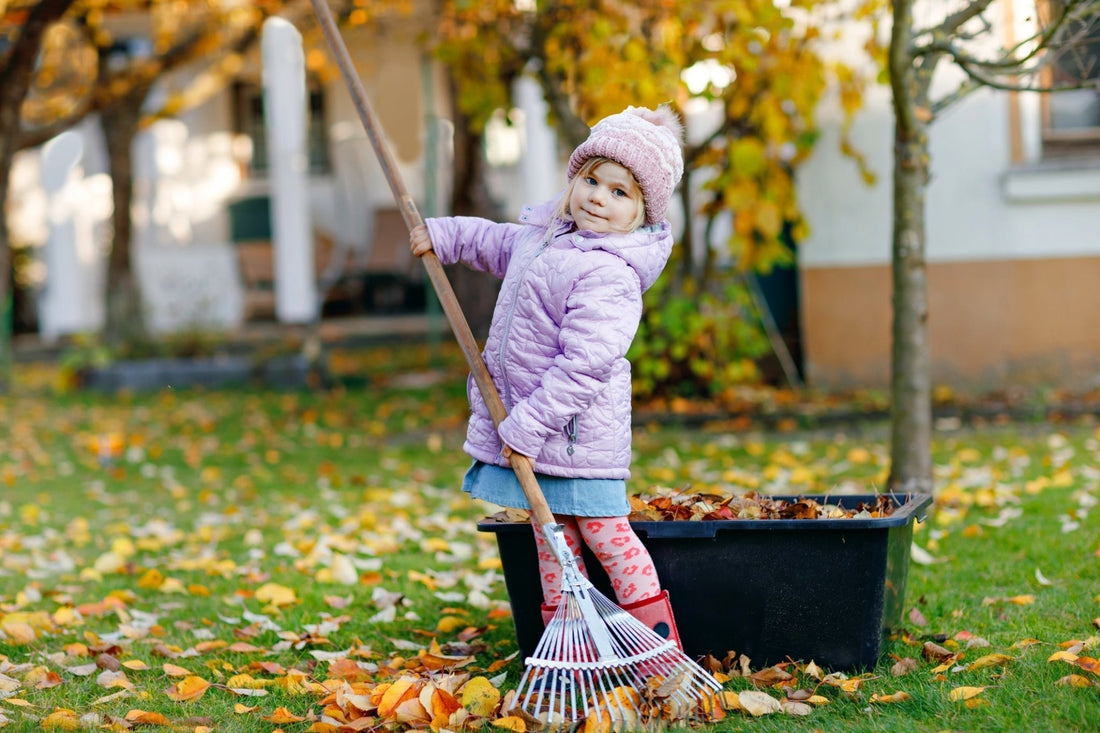Get Your Lawn Ready for a Standing Ovation: Fall Seeding and Fertilizing in Georgina
Your lawn’s had a rough summer, hasn’t it? Between the heat, the drought, and the dog’s questionable choices, it’s probably looking a little patchy and tired. But good news — fall is your lawn’s redemption arc.
That’s right: autumn, not spring, is actually the best time to overseed and fertilize in Georgina’s growing zone 5. Cooler air, warm soil, and steady rain make a dream combo for growing grass that’s so lush your neighbours will wonder what kind of witchcraft you’re using.
Let’s dive into the why, the how, and the “what the heck do I buy?” — all with a dash of humour to keep you from falling asleep in the fertilizer aisle.
Why Fall Is the Prime Time to Overseed and Fertilize
Spring gets all the hype, but fall is where the real lawn magic happens. Here’s why the smart gardeners (that’s you) do their seeding now:
Warm Soil, Cool Air = Happy Seeds:
Grass seed loves warm feet and cool heads — and that’s exactly what fall gives you. The soil’s still toasty from summer, and the air’s mild enough that new seedlings won’t fry.
Less Watering Work:
Fall rain helps keep everything moist without you babysitting the sprinkler. Your water bill can breathe a sigh of relief.
Weeds? What Weeds?
By fall, pesky invaders like crabgrass are calling it quits. That means less competition for your fresh seed.
Stronger Roots for Spring:
New grass planted in fall spends the rest of the year building deep, strong roots — so when spring hits, it’s already miles ahead.
Bottom line: overseeding and fertilizing in fall sets you up for a greener, thicker, happier lawn next year.

Choosing the Right Grass Seed (aka The Secret Sauce)
Not all grass seed is created equal — and picking the right one can make the difference between “meh” and “magnificent.”
We carry Speare Seeds, a top-quality Canadian brand made for Ontario lawns (and yes, for Georgina’s very particular mix of sun, shade, and soil moods). Here’s your quick cheat sheet:
- Extreme Green If your dream is to have that rich, golf-course green lawn that makes people stop mid-dog-walk, this is your blend. Tough, gorgeous, and perfect for high-traffic areas.
- Premium The classic crowd-pleaser. Ideal for full-sun lawns that see plenty of action. It establishes quickly and gives you that even, tidy look.
- Shade Got trees? Shade? A north-facing yard that never sees the sun? This mix laughs in the face of low light. It’s slower to grow but fills in beautifully under cover.
- Thicker If your lawn looks more like a bad comb-over, Thicker is the fix. It’s made for overseeding — it blends right in with existing grass and bulks things up nicely.
Pro Tip: Most lawns aren’t one-size-fits-all. Mix seed types depending on your yard’s sunny and shady spots for better coverage and colour consistency.
Pick the Right Fertilizer — It Matters
Now, let’s talk food. Grass, like us, performs best when it’s well-fed. But fall feeding is a bit different than spring feeding.
In fall, the goal isn’t to make your grass shoot up like it’s on espresso. It’s to strengthen roots and store nutrients for the cold months ahead.
Look for a fertilizer labeled as “Fall” or “Winterizer.” It should have:
- Moderate nitrogen (N) — to encourage steady growth
- Low or no phosphorus (P) — unless your soil is deficient
- Higher potassium (K) — to improve cold tolerance and disease resistance
Something like 10-0-20 or 12-4-8 hits the sweet spot. And if you’re into organics, compost or slow-release organic fertilizers are like a multi-vitamin for your soil.
Pro Tip: Skip the high-nitrogen “spring” formulas in fall — they’ll push top growth at the wrong time, leaving grass vulnerable to frostbite.

How to Overseed and Fertilize Like a Pro (No Landscaping Degree Required)
Alright, time to roll up those sleeves. Here’s how to overseed and fertilize your lawn so it looks like it belongs in a magazine — or at least on your neighbour’s “jealousy list.”
1. Mow Low & Rake It Out
Cut your grass shorter than usual (around 2 inches). Then rake out debris, leaves, and dead grass so new seed can touch soil. Seed-to-soil contact = success.
2. Loosen Things Up
If your lawn feels hard-packed, aerate it first. Tiny holes help water, air, and nutrients reach the roots — and your new seed will thank you.
3. Spread the Seed
Use a broadcast spreader to sprinkle your chosen grass seed blend evenly across the lawn. Follow the seeding rate on the bag — too much seed = crowding, too little = patch city.
4. Rake (Gently!)
Give the lawn a light rake to tuck the seed just under the surface. No need to bury it — it just needs a cozy soil hug.
5. Fertilize
Once seeded, apply your fall fertilizer evenly with a spreader. You’re basically serving up a gourmet meal for your grass.
6. Water, Then Water Some More
Keep that soil moist but not soggy. Light watering once or twice a day for the first two weeks is perfect. As it grows, ease off to every other day.
7. Hands (and Feet) Off
Avoid walking on your newly seeded areas. Those tiny sprouts are delicate. And no mowing until the new grass hits about 3 inches tall.
How Long Does It Take to Grow?
You’ll start to see green in as little as:
- 5–10 days for ryegrass
- 10–14 days for Kentucky bluegrass
- 7–14 days for fescue
So yes — patience, my friend. In 2 weeks you’ll spot sprouts. In 4–6 weeks, it’ll be filling in nicely. Seed by early to mid-October in Georgina for the best results before frost.

Caring for Your New Grass (Because It’s Basically a Baby)
New grass needs a little extra attention — think of it as your green toddler.
Keep It Moist: Never let the top inch of soil dry out during germination.
No Weed Killers: Skip weed treatments until the grass has been mowed at least three times.
Stay Off the Lawn: Limit foot traffic for 4–6 weeks. Maybe it’s time to finally teach the dog “stay.”
Feed Again Before Winter: About six weeks after seeding, apply a light winterizer fertilizer to help it store energy for spring.
Bonus Fall Lawn Tips
- Rake those leaves! They block sunlight and trap moisture — a fast way to smother new grass.
- Topdress with compost. A thin layer (¼ inch) keeps soil warm and nutrient-rich.
- Don’t wait too long! Once soil temps dip below 10°C, seeds go into snooze mode. Aim to seed and fertilize by mid-October.
Fall Lawn Care - Let’s Get Growing!
Your lawn might look rough now, but with a little fall TLC, it’ll be the envy of the neighbourhood come spring. Overseeding fills in the bald spots, fertilizing strengthens the roots, and by next year you’ll be tempted to host a garden party just to show it off.
So there you have it, Stop by Georgina Garden Centre and grab your bag of grass seed — Extreme Green, Premium, Shade, or Thicker — and your favourite fall fertilizer. Future you (and your lawn) will thank you.
Don’t feel like doing the seeding and fertilizing yourself? No problem — our landscape team can handle it for you! From prepping the soil to applying the perfect blend, we’ll get your lawn lush, healthy, and ready for spring.
Visit us in-store or contact our landscape team today to book your fall lawn care service!
Happy gardening!




